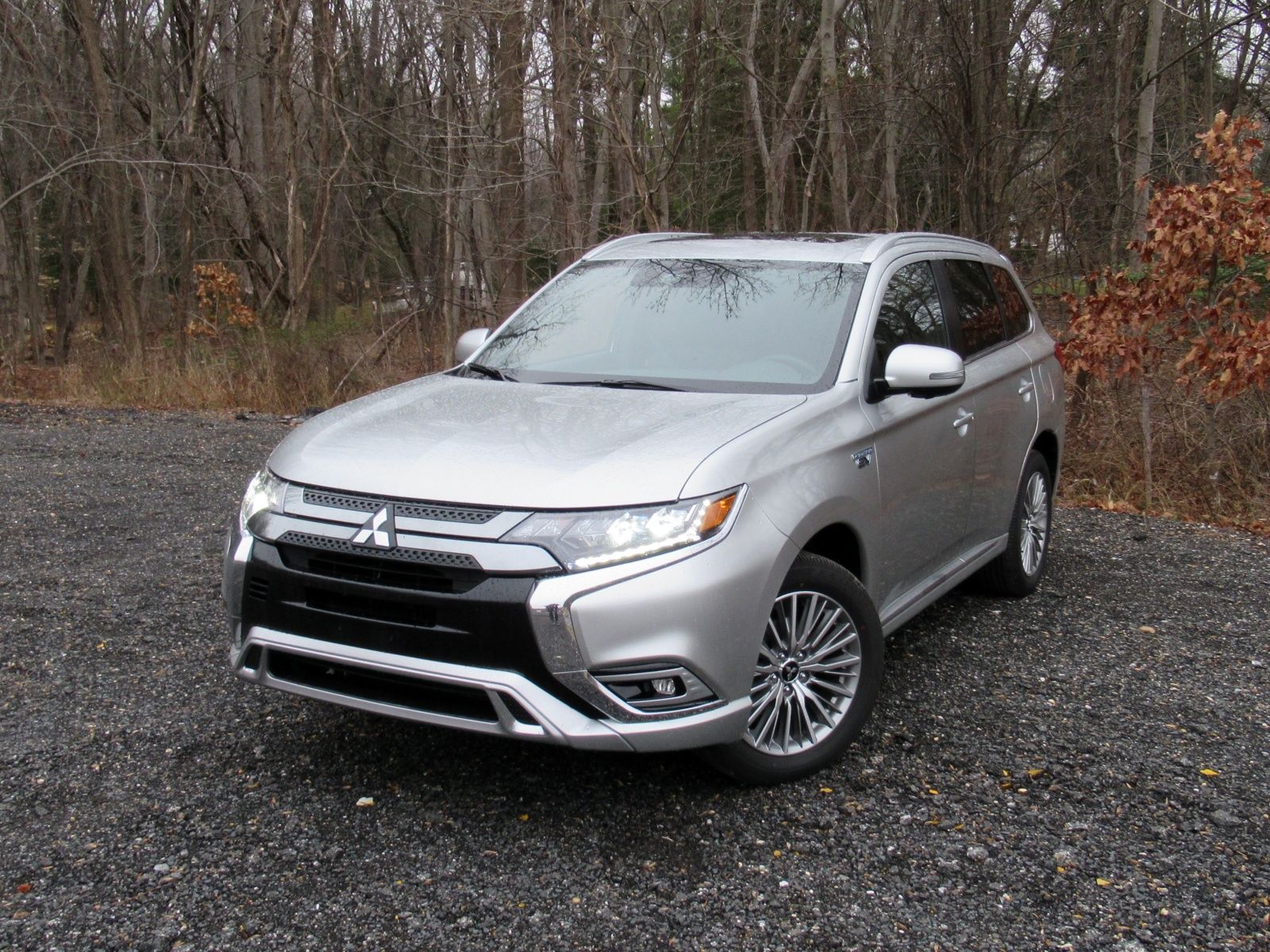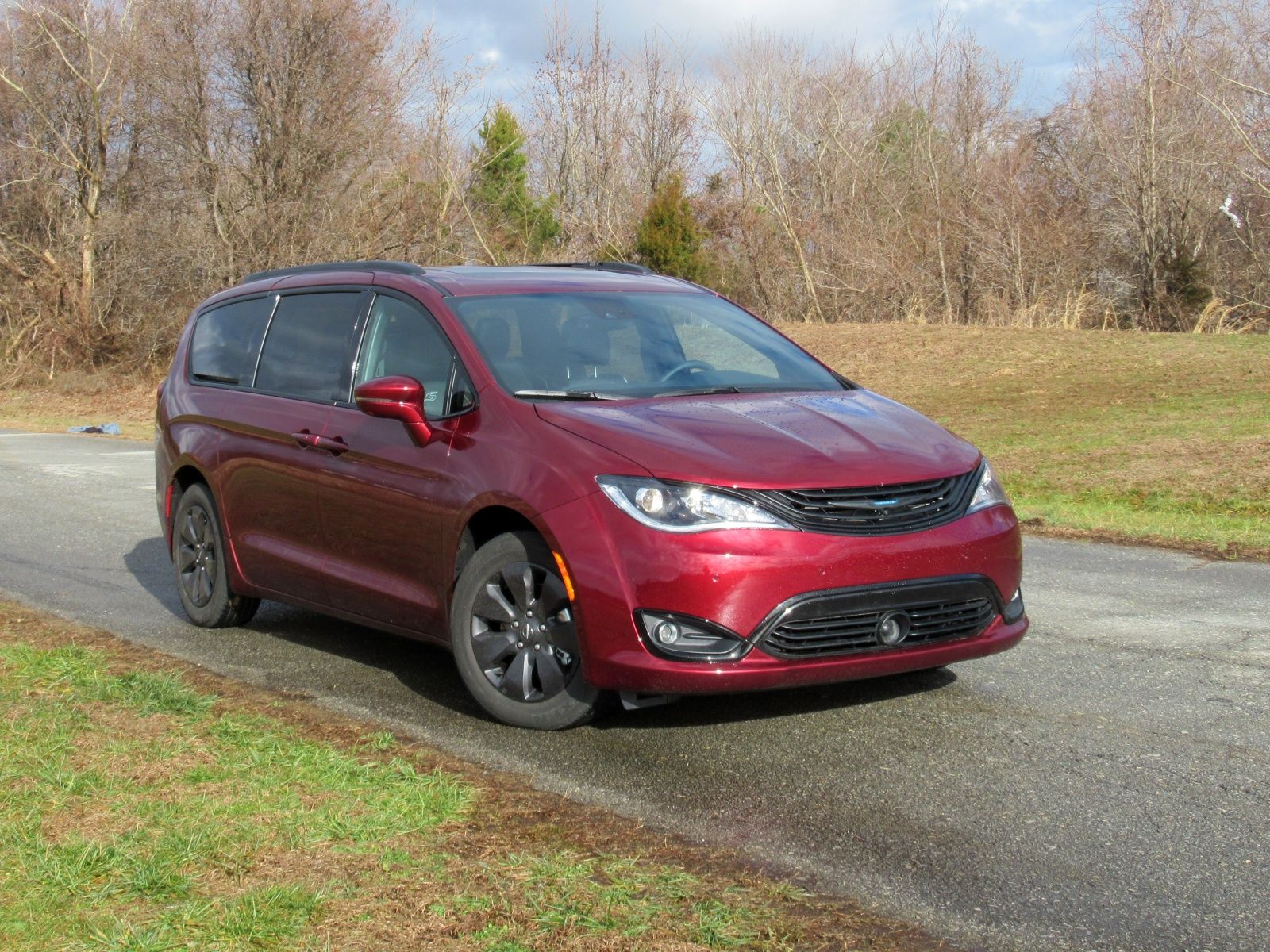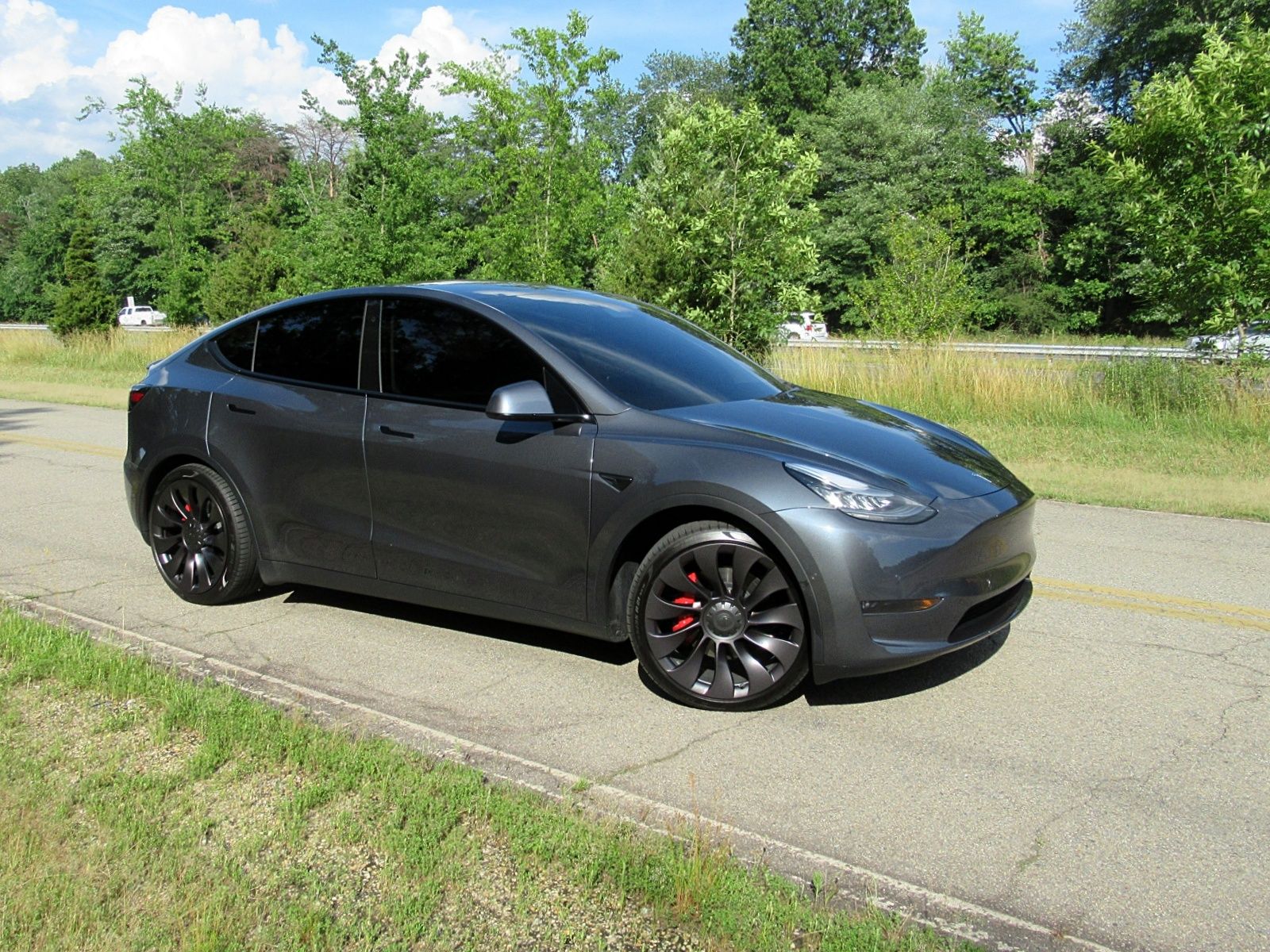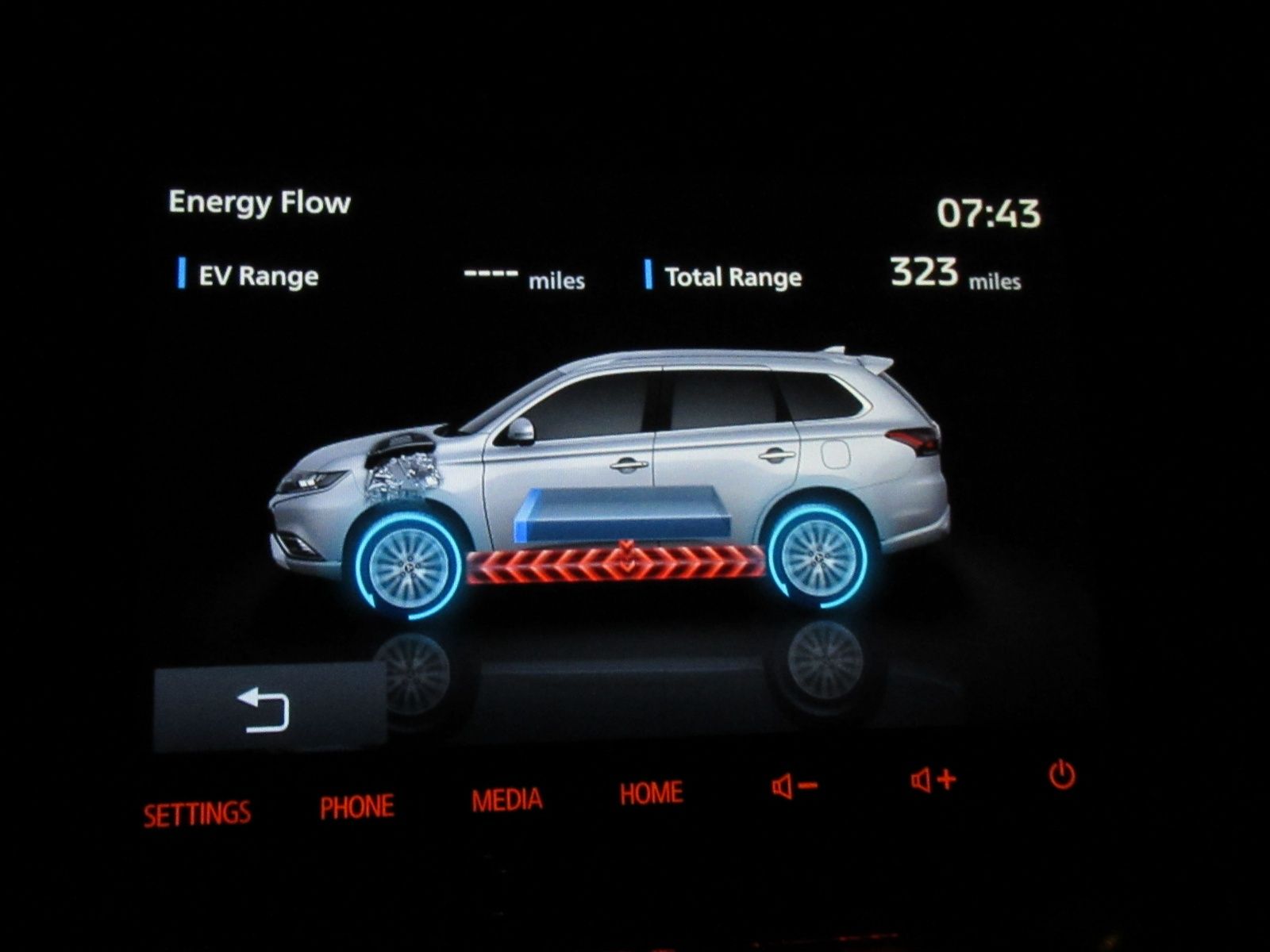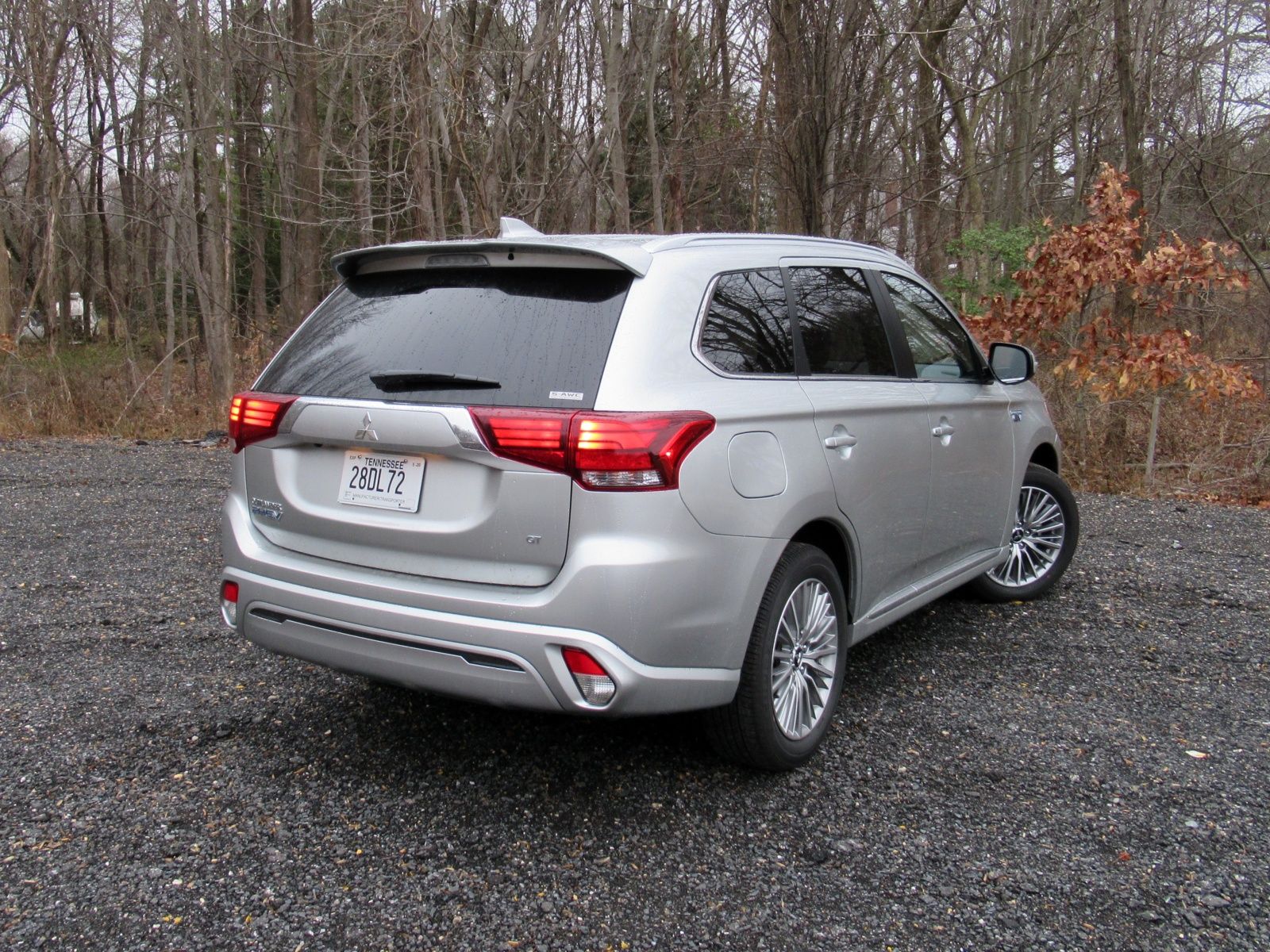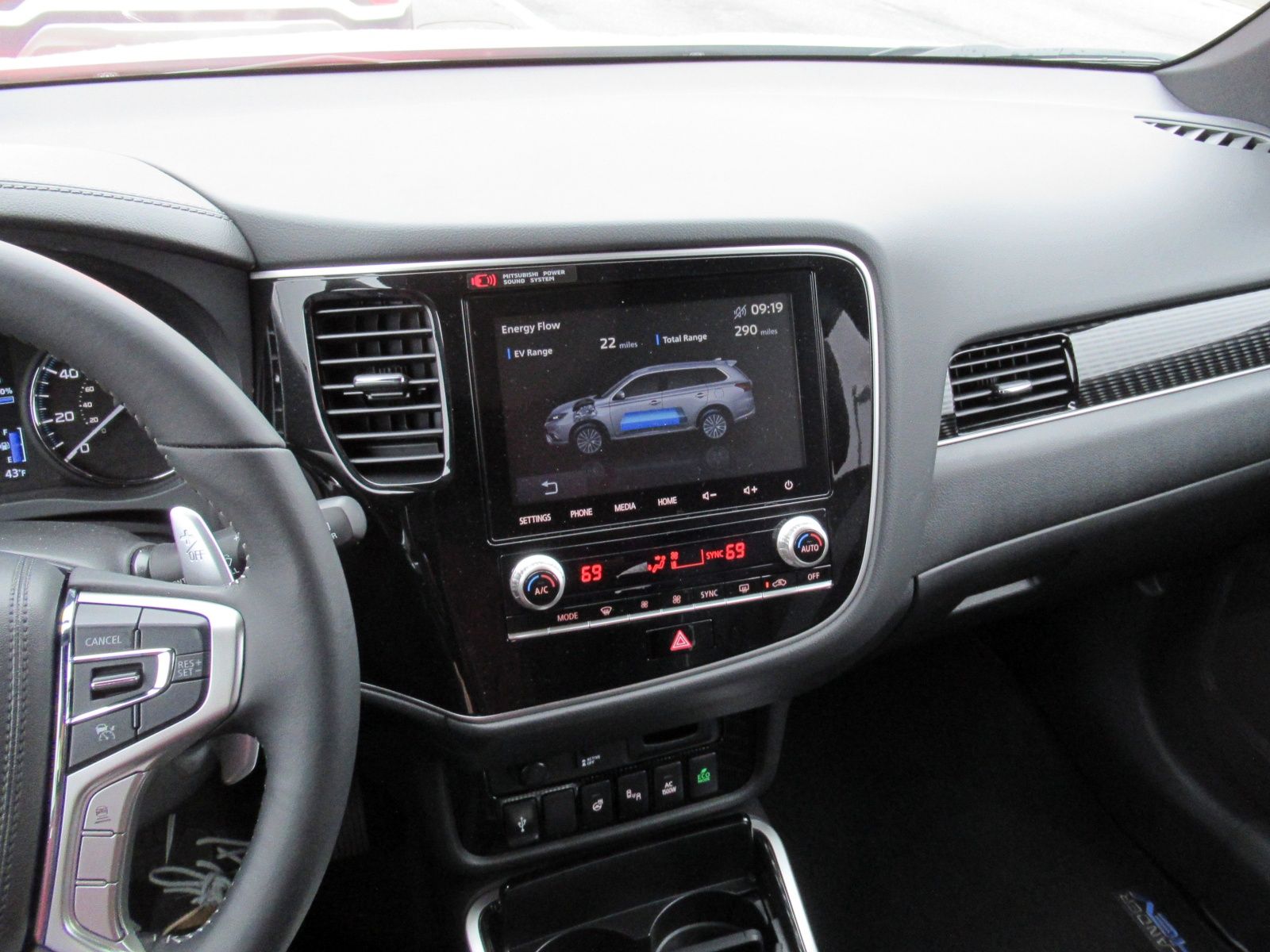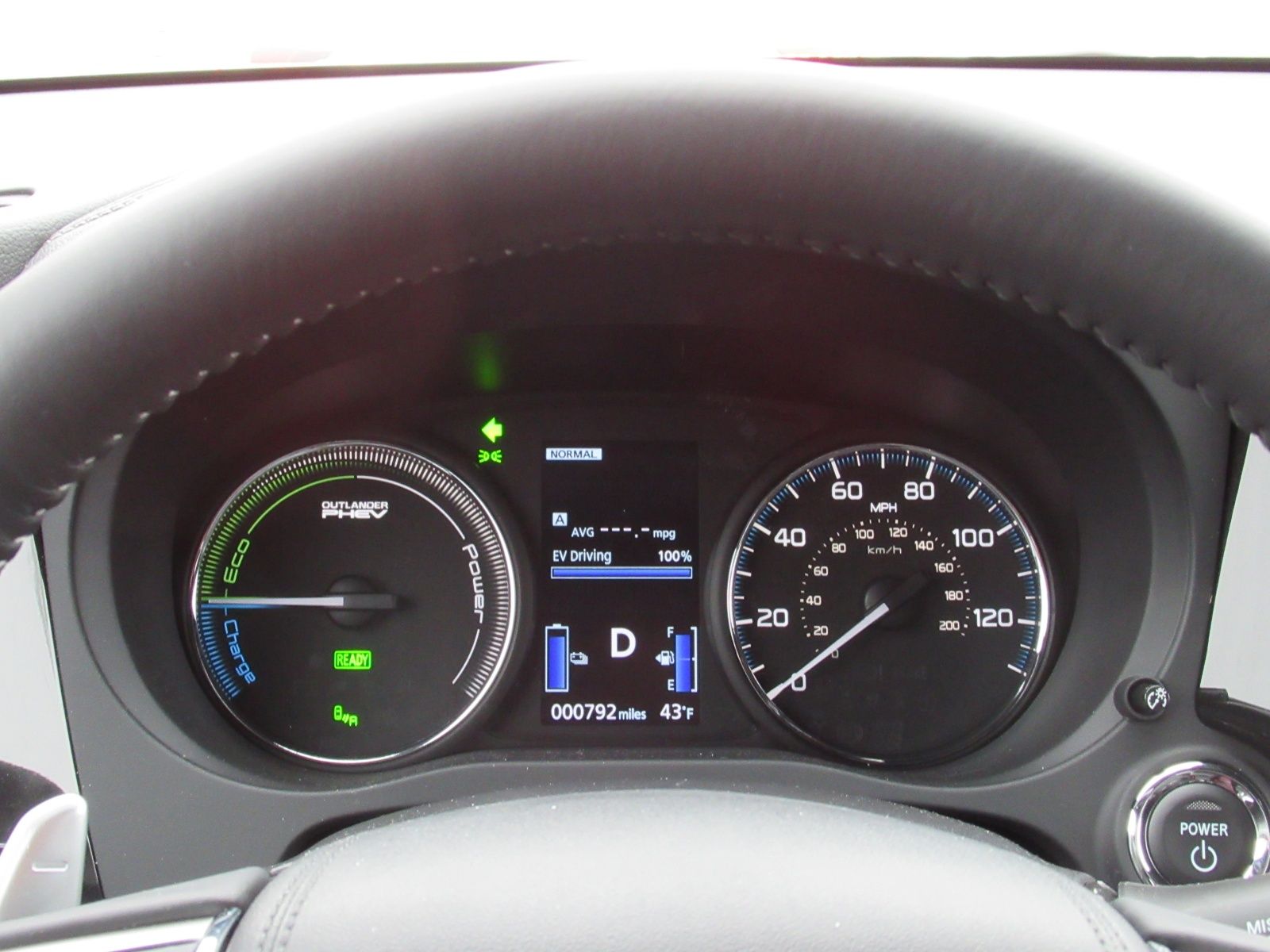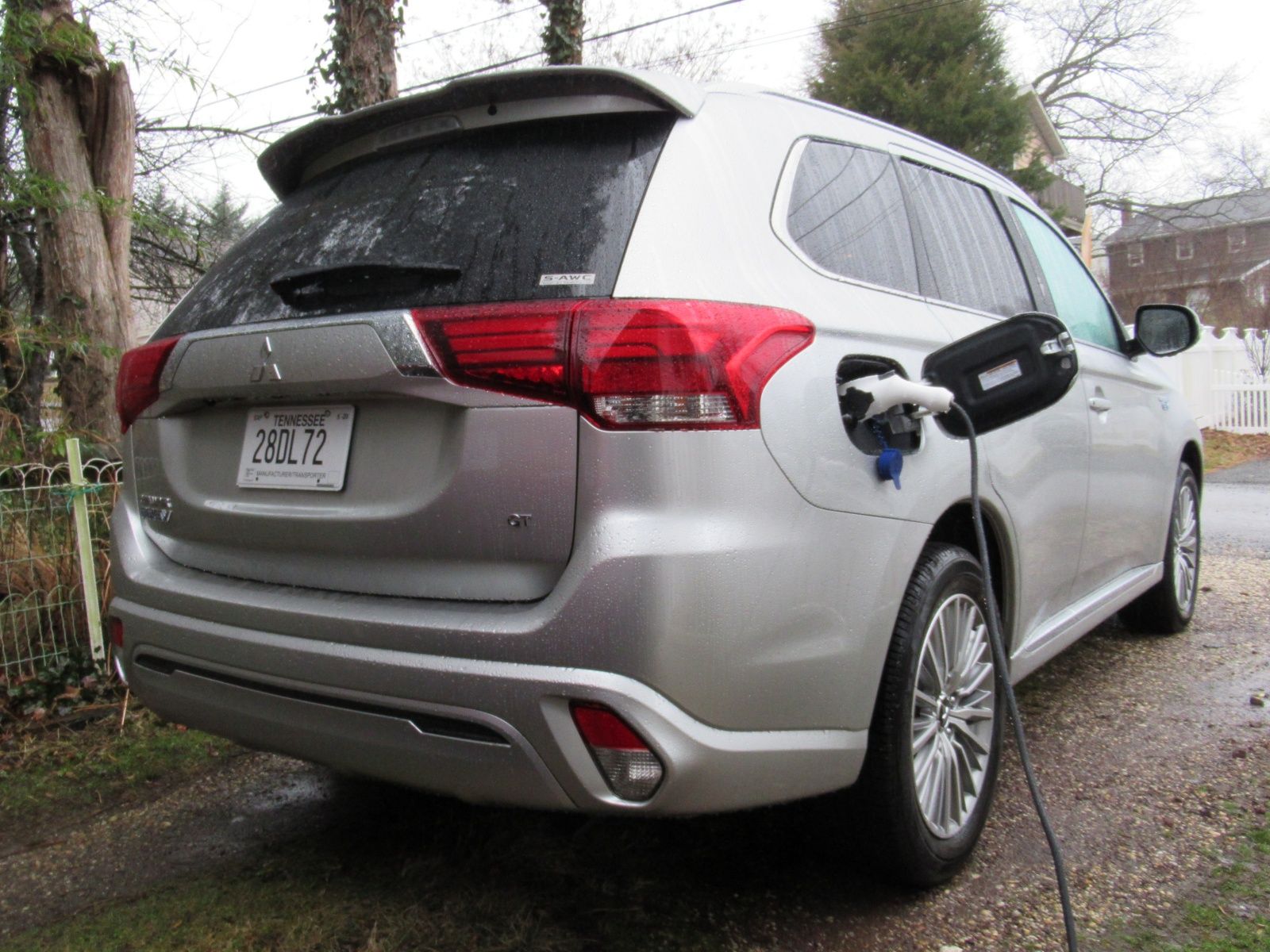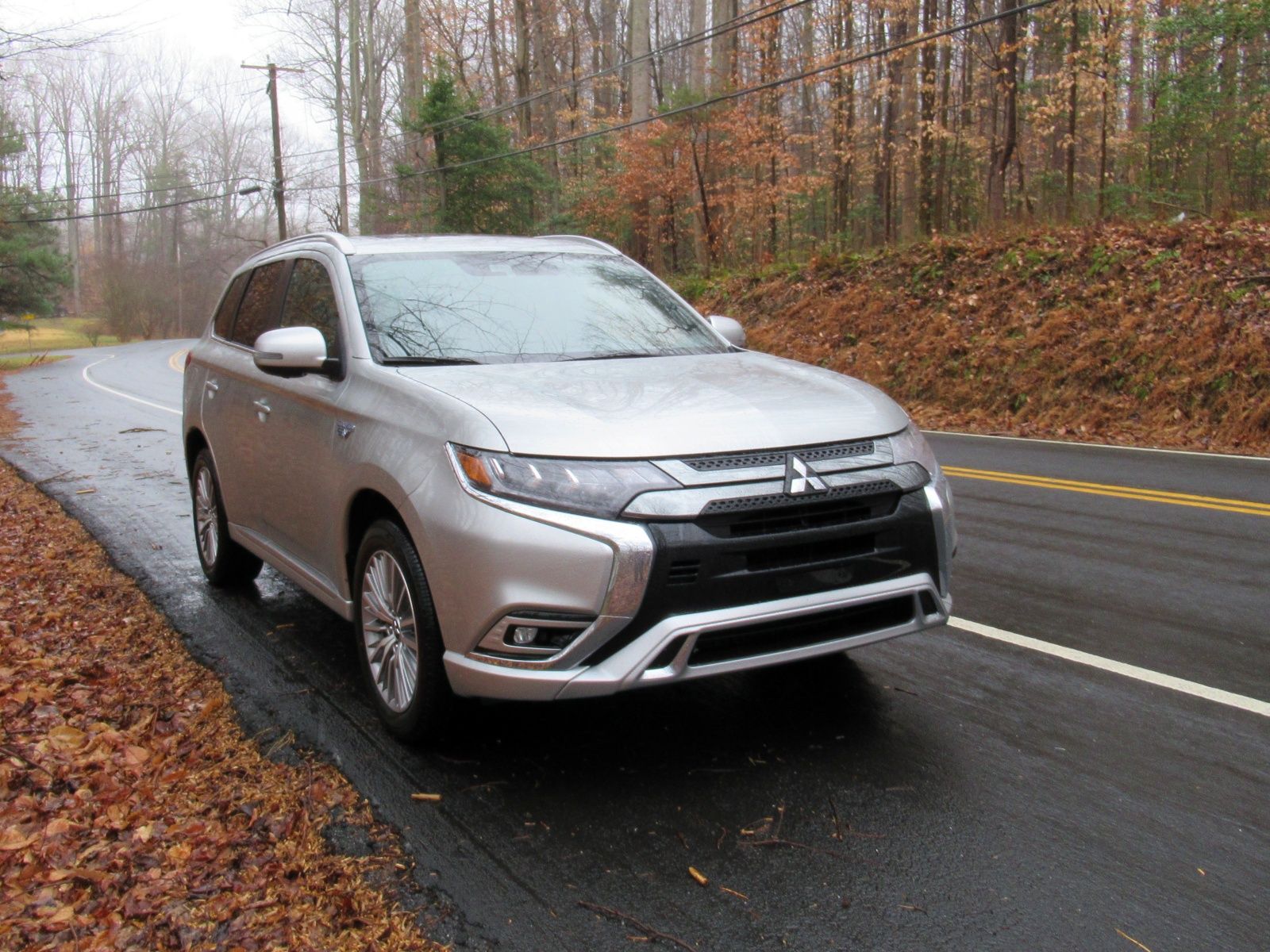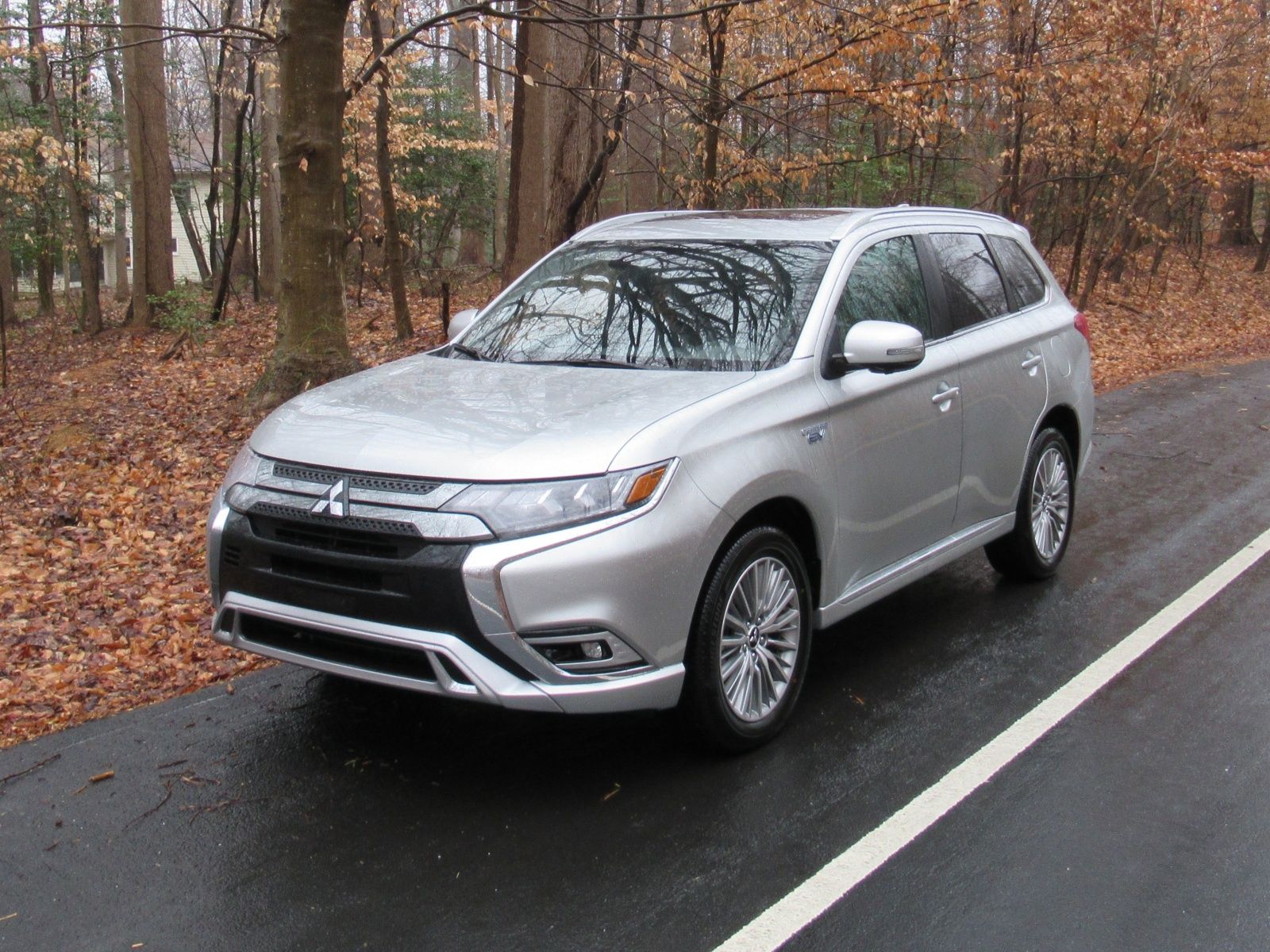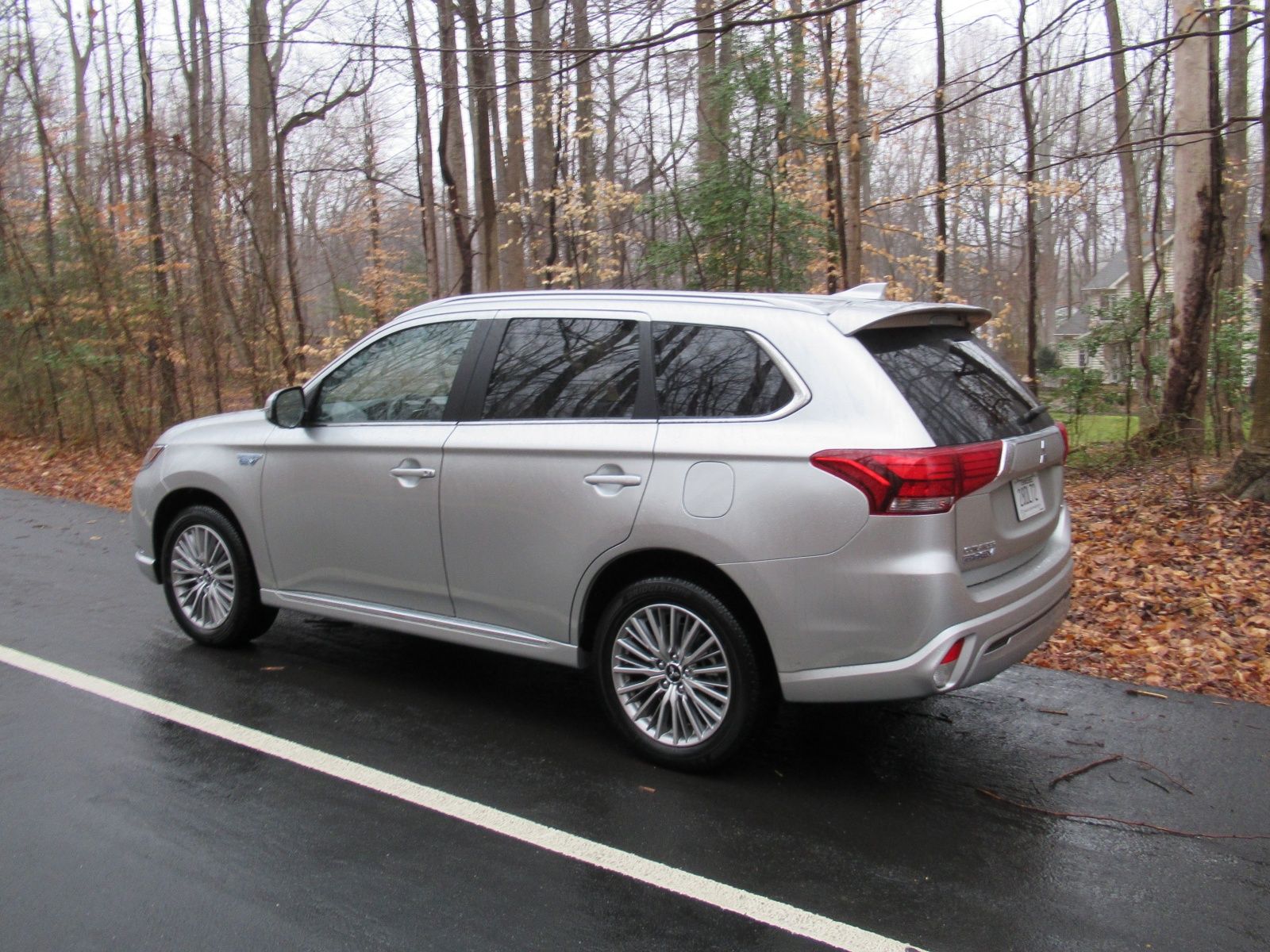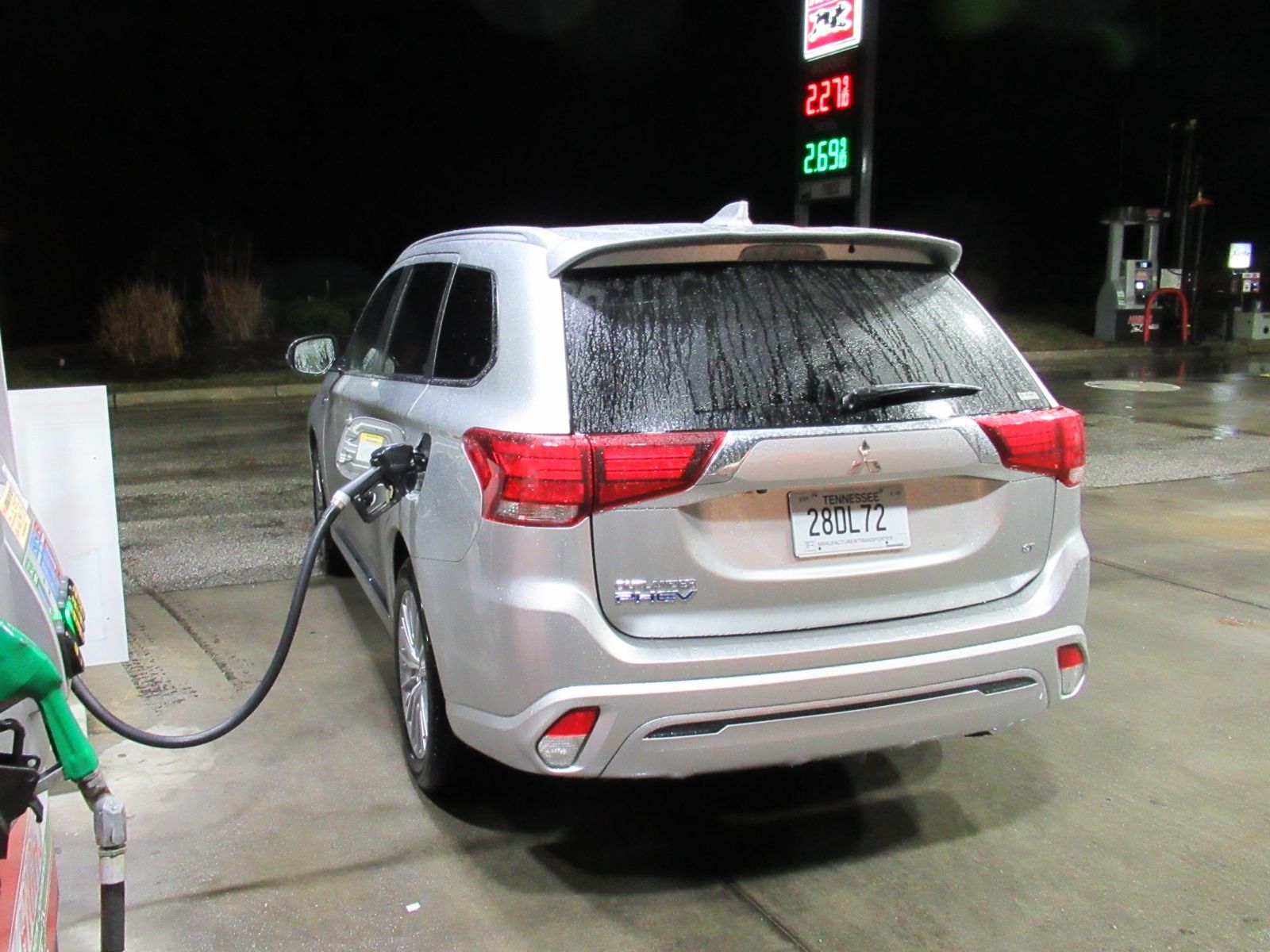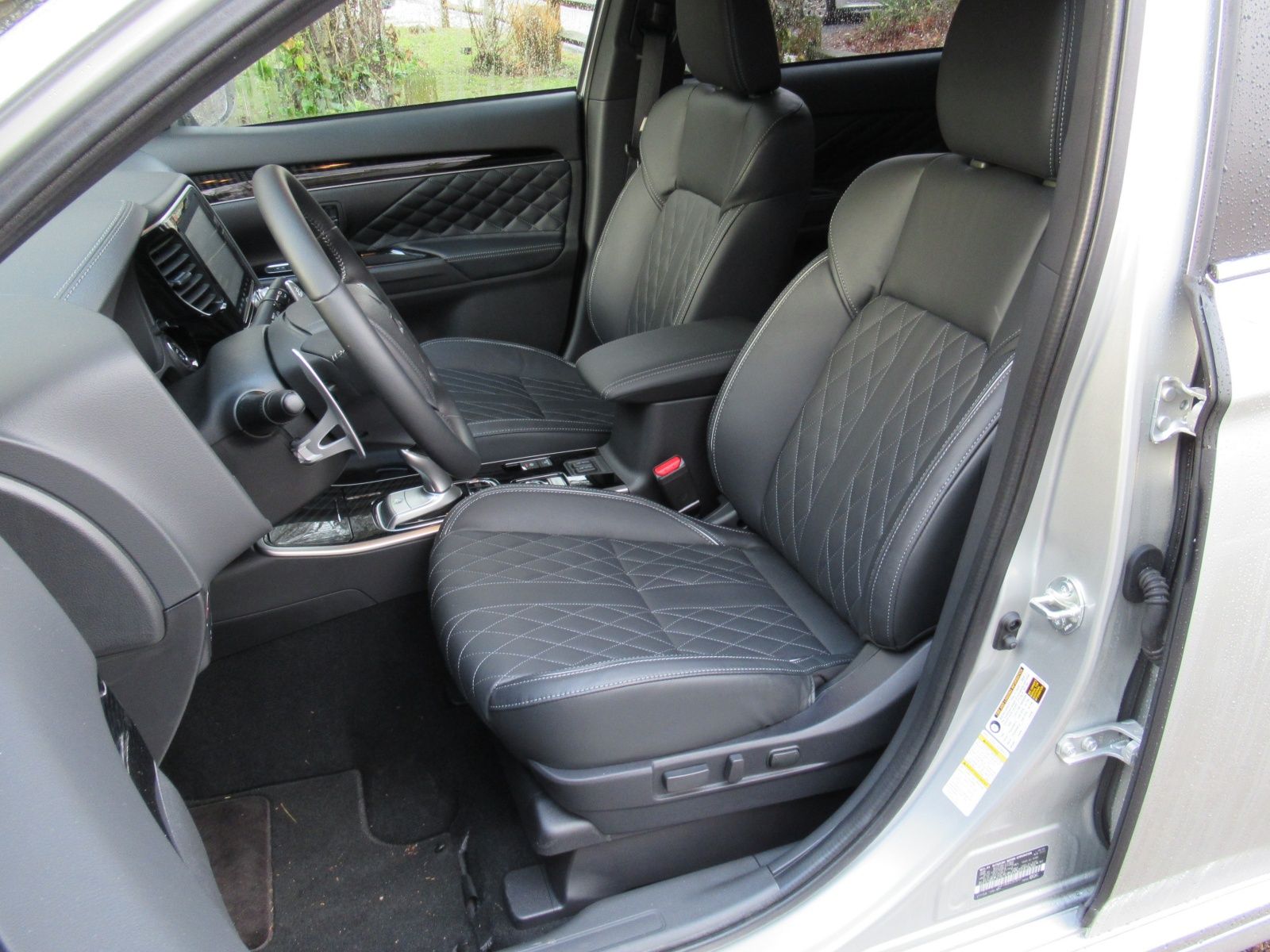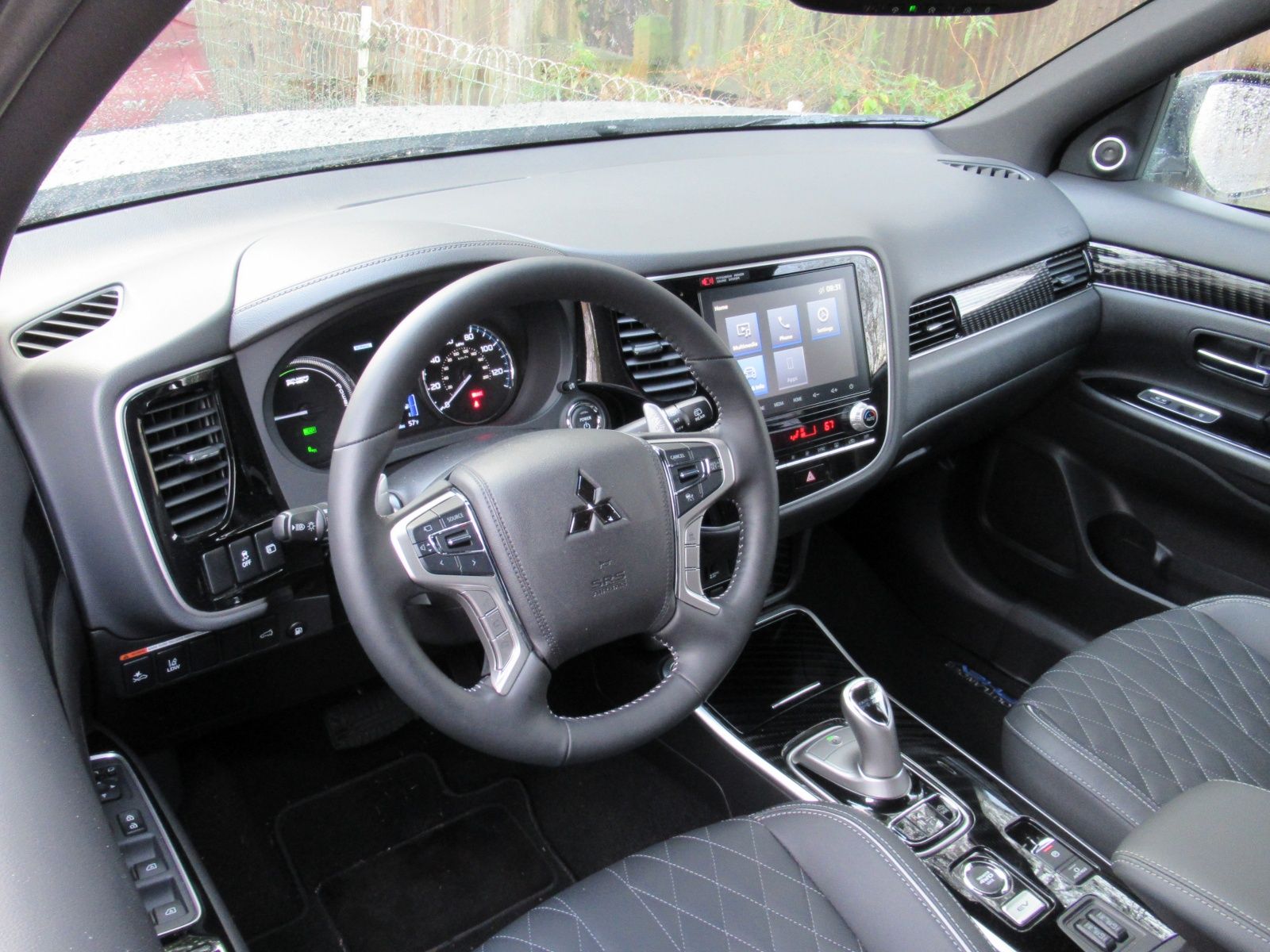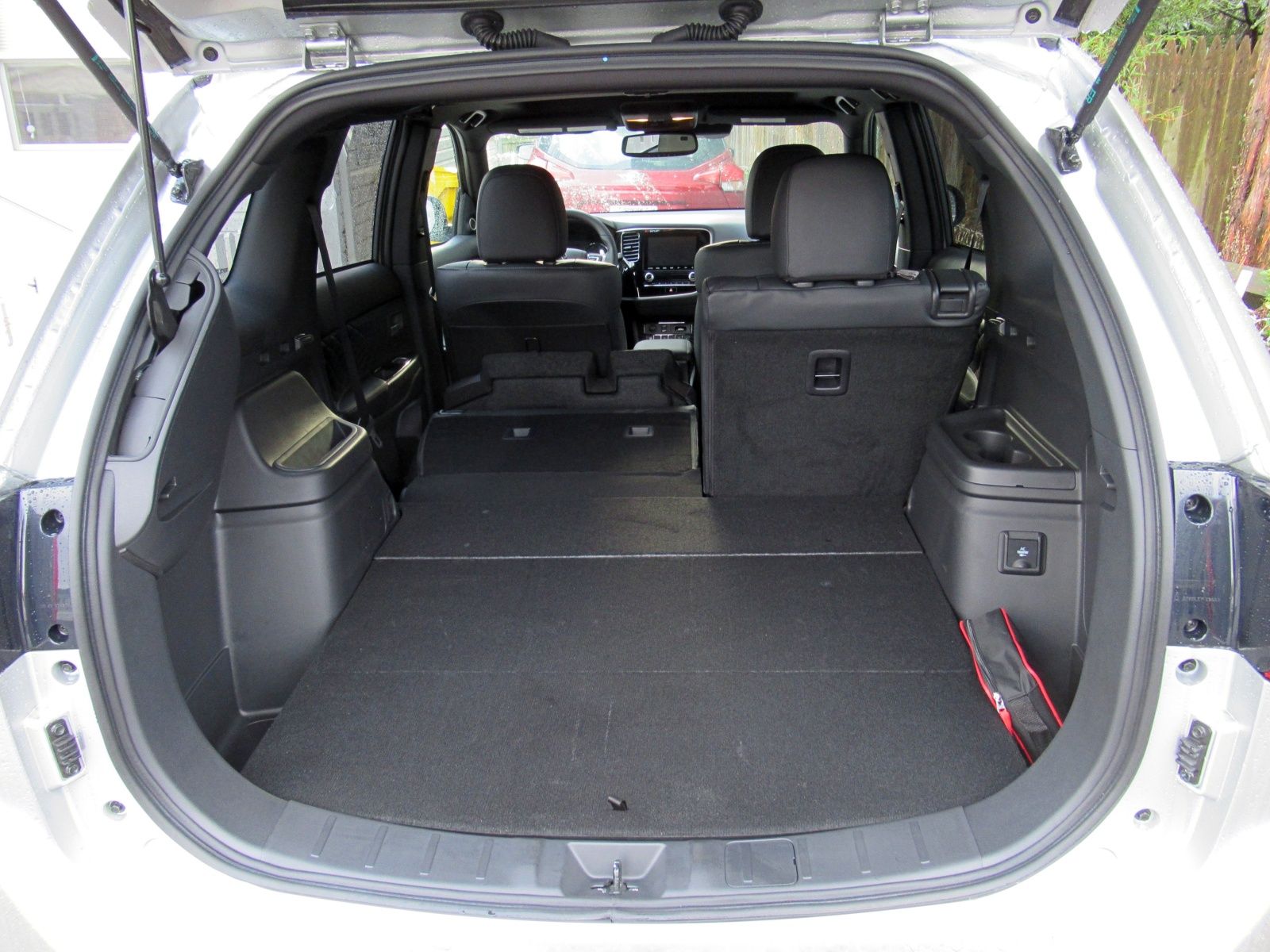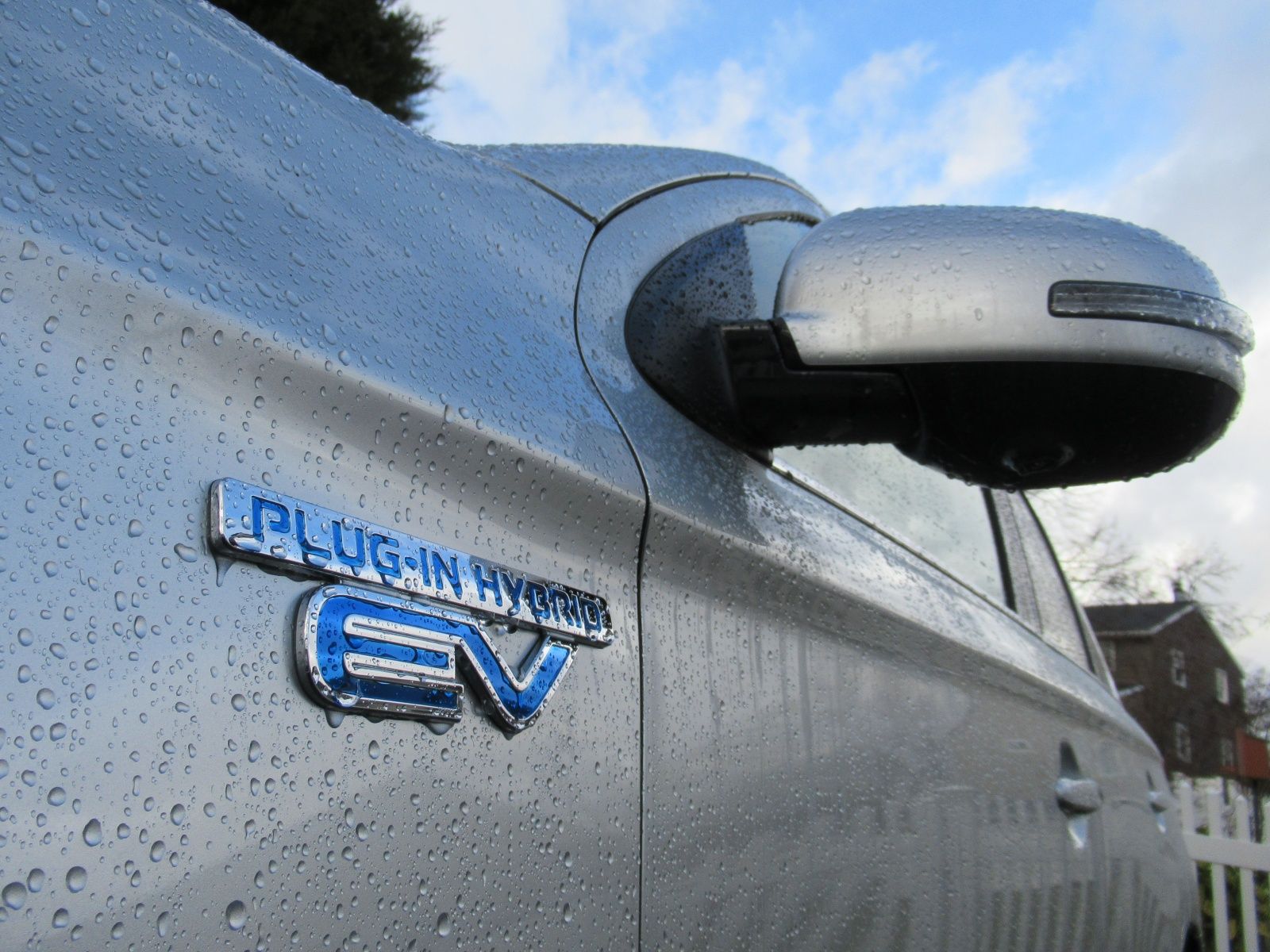Everything about the Tesla Model Y looks like the car of the future. From its pod shape, to its silent but explosive acceleration, to its all-encompassing infotainment screen with no physical buttons, the electric-car maker’s new entry-level crossover is more about sensibly reducing gasoline usage. It gives you a peek into the decades to come, and it gives you a rollicking good time while you do it. It’s not just an electric car, but a special vehicle that triggers a powerful emotional response. This is one way to electrify an SUV.
Then there’s Mitsubishi’s way: the 2020 Mitsubishi Outlander Sport PHEV. All-electric cars eventually run out of charge, even long-range models like Teslas. So Mitsubishi made a plug-in hybrid whose gasoline engine can help out when you use up the battery or need more power. To keep costs down, the battery isn’t huge and the motors aren’t wildly powerful. And Mitsubishi already makes many gas-powered crossovers, so rather than wasting resources to develop a new one, it retrofitted electric components into its flagship model, the compact Outlander.
The result is a left-brain approach to the segment — the Outlander PHEV makes perfect sense, but it’s an improved present rather than the future. At best, you’ll feel something between mildly impressed and grudgingly accepting. It’s hard to imagine falling in love.
2020 Mitsubishi Outlander PHEV - Driven
- Make: Array
- Model: 2020 Mitsubishi Outlander PHEV - Driven
Mitsubishi Outlander in Brief
On paper, here’s how the 2020 Mitsubishi Outlander PHEV stacks up: it starts at $36,295 (with lots of standard features, and that drops to $30,459 after federal tax incentives. It can go an EPA-estimated 22 miles per charge without gasoline, and then as far as you want after that if you keep filling up its gas tank. It can comfortably hold five passengers or 67 cubic feet of cargo, and it’s easy to drive and pleasant to look at. That means that if you usually take relatively short trips at low speeds, you get the benefits of an electric car without its range limitations.
There’s another problem: The Outlander PHEV is about to face two new competitors that challenge its niche head-on. It’s been alone in the affordable plug-in crossover segment since its 2018 debut, but the best-selling Ford Escape’s PHEV version has just gone on sale and the Toyota RAV4 Prime is following by the end of the year.
Both offer more than 30 miles of all-electric range, promise a superior driving experience and a more modern cabin, and remain competitive with the Mitsubishi’s spaciousness and price. To see what strengths the Outlander PHEV is prepared to bring to these matchups, let’s go over what we learned from our week in this plug-in hybrid crossover.
2020 MITSUBISHI OUTLANDER PHEV - DESIGN AND UTILITY
The Outlander PHEV shares its body with the gas-powered Outlander that arrived as a 2014 model. Multiple design updates since then have dressed up the long, narrow body with LED lighting and a shiny chrome grille.
There’s subtle “Plug-In Hybrid EV” badging, and fuel doors on both sides of the vehicle (for gasoline on the driver’s side and electricity on the passenger side). Otherwise, they’re visually identical on the outside.
There’s a joystick-like electronic gear selector, and in place of the tachometer is a fairly meaningless display of how far you’ve pressed the accelerator: eco vs. power, or “charge” if you’re coasting or braking. You can also find some electrification-related graphics on the infotainment screen, including a display that shows where the energy is flowing — whether the gas engine or electric motor is driving the wheels, and whether regenerative braking or the engine are recharging the gas engine.
But the dashboard is plain — it has aged fairly well, thanks to gentle curves and simple shapes, but there’s nothing cutting-edge to be seen. And the 8-inch infotainment system, though new this year, has sluggish responses (exacerbated by a lack of physical audio controls) and muted graphics.
Mitsubishi provides 30.4 cubic feet behind the rear seat and 66.6 cubic feet with the rear seat folded down. The cargo hold is long, low, and narrow compared to the compact crossover norm, though, and folding the rear seat is a clumsy multi-step process. The Outlander PHEV also lacks the small but potentially useful third-row seat found in the gasoline model. Our fully loaded GT test vehicle includes dressy quilted leather upholstery, a new option this year that adds a bit to the otherwise humdrum cabin ambiance.
There’s one unique function included in the Outlander PHEV GT: Two power outlets, in the rear seat and cargo area, can support most portable household appliances. Mitsubishi cites examples of a television, mini fridge, spotlight, electric grill, or coffeemaker — a boon for camping or tailgating even if you don’t care about electric cars. (Using your battery this way means you’ll need gasoline when you’re actually driving, of course.) Towing capacity is a modest 1,500 pounds, the same as the Ford Escape PHEV but 1,000 pounds less than the RAV4 Prime.
2020 MITSUBISHI OUTLANDER PHEV - DRIVING EXPERIENCE
The gasoline engine can either run as a generator that recharges the batteries as you drive, or it can directly power the wheels. It’s an intricate engineering solution similar to the original Chevrolet Volt, except that Mitsubishi adds all-wheel-drive capability by providing a motor exclusive to the rear wheels.
2020 Mitsubishi Outlander PHEV specifications
|
Type |
2.0L MIVEC DOHC, 16-valve, 4-cylinder |
|---|---|
|
Engine Code |
4B11 |
|
Bore x Stroke |
86.0 mm x 86.0 mm |
|
Compression Ratio |
10.5 : 1 |
|
Displacement |
2.0L / 1,998 cc |
|
Horsepower |
117 hp @ 4,500 rpm |
|
Torque |
137 lb-ft @ 4,500 rpm |
|
Motor Code - Front |
S61 |
|
Motor Power Output (kW) - Front |
60kW |
|
Motor Torque Output (Nm) - Front |
137 Nm |
|
Motor Code - Rear |
Y61 |
|
Motor Power Output (kW) - Rear |
60kW |
|
Motor Torque Output (Nm) - Rear |
195 Nm |
When charged, the Outlander PHEV can accelerate and cruise normally without needing the gasoline engine, but it will sometimes kick on at freeway speeds and harder acceleration — about 10% of the time during our week in the vehicle.
The EPA rates the Outlander PHEV at 22 fully electric miles per charge and 25 mpg using the gasoline engine after the electric range is used up. That range should be enough for many drivers’ commutes, especially if they’re in stop-and-go traffic (where hybrids and electric vehicles are generally more efficient than on open highways).
And not counting the electricity usage, we also averaged 30.6 mpg while the Outlander PHEV was in hybrid operation — well above the 25 mpg EPA estimate. That’s pretty good for a decently roomy compact crossover, though less than competing hybrids. This is a car you buy if you know you won’t need the engine often.
The Outlander PHEV’s range is in line with luxury plug-in hybrid crossovers, which until recently had been the only other game in town. But the 2020 Ford Escape PHEV offers an estimated 37 miles of range per charge, while the 2021 Toyota RAV4 Prime manages 42 miles. This might not matter too much if you don’t usually drive more than 22 miles per day, but it’s a substantial deficit all the same. The Ford and Toyota also promise better fuel economy in hybrid mode after their range is used up.
Setting aside the electrification, the Outlander PHEV’s overall driving experience is similar to four-cylinder gas models. The ride edges toward too stiff, the steering edges toward too light, and acceleration edges toward too slow, though none of them cross over into awfulness. True, this isn’t a car that you buy because it drives well — but if you buy it because you want to rarely use gas during your 22-mile round trip to work, it won’t make you miserable.
You probably won’t even need to buy a 240-volt car charger. The Outlander PHEV’s battery can be fully recharged in eight hours at a regular 120-volt three-prong outlet, so if you plug in when you get home from work, you’re all set by the morning. If you do have a car charger or use a 240-volt public station, you’ll get your 22 miles in less than four hours. And you can use the DC Fast Charging capability on compatible public chargers to get 80% of the charge (about 18 miles) in 25 minutes.
The Outlander PHEV also lets you set the climate system in advance so that the car gets the right temperature before you unplug it, meaning you won’t lose any range to warm up or cool down the cabin.
2020 MITSUBISHI OUTLANDER PHEV - PRICING AND TRIM LEVELS
The Outlander PHEV starts at $36,295 in its base SEL trim level (plus a $1,195 destination charge). The SEL is an upper-level trim on the gas-powered Outlander, where it costs $27,495. That makes a modest $3,000 difference for the PHEV when you factor in the $5,836 federal tax credit. Standard features include leather upholstery, heated and eight-way power-adjustable front seats, keyless entry with push-button starting, a power liftgate, and — newly standard this year — a suite of advanced safety features: a forward collision warning with automatic emergency braking and pedestrian detection, a lane-departure warning, blind-spot monitoring with a rear cross-traffic alert, and automatic high beams.
In our opinion, Mitsubishi would do well to offer a PHEV version of a lower-end Outlander model to better compete with the base trim levels of the Ford Escape PHEV and Toyota RAV4 Prime — and, if possible, to also cut its prices across the board. The Outlander PHEV wasn’t a bad deal when it was the only player in town, but it’s now facing competitors that drive better and have significantly more range, at similar prices. Let’s go over those details now.
2020 MITSUBISHI OUTLANDER PHEV - KEY COMPETITORS
2020 Ford Escape PHEV
The newly introduced plug-in hybrid version of the Ford Escape sharply undercuts the Outlander’s base price, starting at $33,040. Even a top-of-the-line Titanium model is $38,835, less than our tested Outlander PHEV GT. Ford also has a bigger federal tax credit, which is tied to the battery capacity — $6,843. That battery capacity also boosts the Escape’s range per charge to 37 miles. Besides those advantages, the Escape has a slicker infotainment system, a wider variety of trim levels to choose from, and nimbler handling. The Outlander counters primarily with a bit more rear legroom and cargo space.
Read our full review on the 2020 Ford Escape PHEV
2021 Toyota RAV4 Prime
The Toyota RAV4 Hybrid is America’s best-selling gas-electric car — even more popular than the iconic Toyota Prius — and the upcoming Prime model adds plug-in hybrid capability to its many merits. At least based on the numbers, it seems to dominate the segment, combining class-leading range (42 miles per charge) with class-leading acceleration (a sports-car-like 5.7 seconds to 60 mph). Like a Tesla, this is an efficient car with a “cool” factor. The RAV4’s rugged looks have also won praise in the compact crossover segment. The only big downside so far: Prices are on the steep side at $38,100 and up, even with less standard equipment than the Outlander PHEV; what’s more, early buyers might face further markups and waiting lists. (Prices are offset by a $7,500 federal tax credit.) As with the Escape, the Mitsubishi also has a slightly roomier rear seat and cargo hold than the RAV4 Prime, but the Toyota can tow more.
Read our full review on the 2021 Toyota RAV4 Prime
2020 Kia Niro PHEV
If you don’t need as much space as the Outlander, Escape, or RAV4, and won’t miss their all-wheel-drive, the plug-in hybrid variant of the Kia Niro subcompact crossover delivers up to 26 miles of all-electric range per charge at a starting price of just $29,490 (before a $4,543 federal tax credit). There’s space for four adults to be decently comfortable, but cargo space is more limited: 19.4 cubic feet behind the rear seat and 54.5 cubic feet with the seat folded down. And Kia doesn’t recommend towing. Still, the Niro is a nimble, efficient, decently functional, and relatively affordable way to nearly eliminate gasoline.
Read our full review on the 2020 Kia Niro PHEV
2020 Chrysler Pacifica Hybrid
Moving the other direction in size, families interested in a plug-in hybrid might appreciate the extra space found in the Chrysler Pacifica minivan. The classy, refined Pacifica offers spacious seating for seven, massive cargo space, and lots of standard features at its base price of $39,995 (before a $7,500 federal tax credit). Unless you prefer a smaller vehicle or need all-wheel-drive, that’s a tempting alternative to a small crossover for not much more money. This big van also has room for a big battery, capable of an EPA-estimated 32 miles of range per charge and 30 mpg after the range is used up (though we weren’t able to match those EPA estimates when we tested the van).
Read our full driven review on the 2020 Chrysler Pacifica Hybrid
2020 MITSUBISHI OUTLANDER PHEV IN A NUTSHELL
Until this year, the Mitsubishi Outlander PHEV was by itself in an intriguing niche. It’s a roomy, family-friendly vehicle that can use little to no gasoline for many possible buyers, yet that has the gas-tank flexibility for any road trip. That’s an appealing enough combination that it was worth excusing the Mitsubishi’s mediocre driving manners and cabin ambiance.
But now that competition is heating up, the Outlander is forced into a far smaller niche. To buy one over the longer-range, similarly priced, more modern-looking, better-driving Toyota RAV4 Prime or Ford Escape PHEV, you’d either have to really love the Mitsubishi’s slightly roomier interior, or you’d have to score an Outlander PHEV at a steep discount.
That said, Mitsubishi’s lower-range battery and lower-performance electric motors are also located inside an aging, middling crossover. That combination makes the Outlander PHEV a tough sell.
But with so few options to choose from, the Outlander doesn’t come up so terribly short — unless you have a longer commute — that we’d advise against even considering it. We can’t see many folks making it their first choice, but for gas-free commuting in a roomy, functional crossover, the Outlander PHEV remains a viable option.

